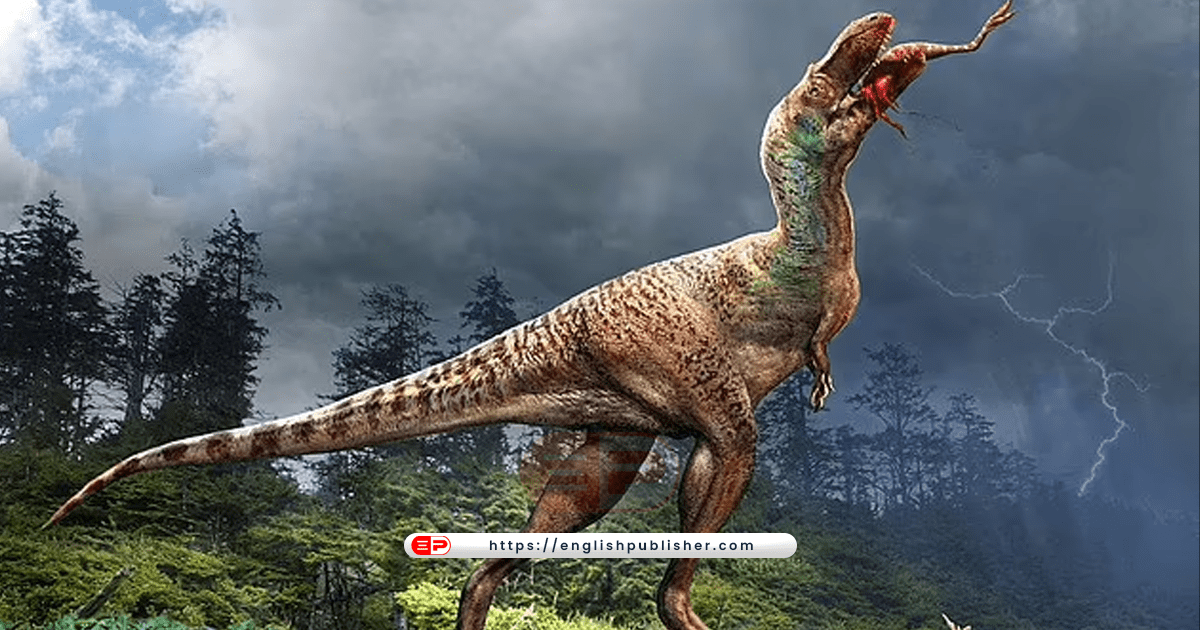What did the dinosaur that lived in this world 70 million 50 years ago, which was actually a tyrannosaurus, eat its last meal? Scientists have reported that it ate newborn dinosaurs.
Researchers say the preserved remains of this dinosaur and two unfortunate smaller dinosaurs have given us new information about the eating habits of these animals.
“There is very strong evidence that tyrannosaurs changed their diet dramatically as they grew,” said Dr. Darla Zielinski of the University of Calgary.
This specimen is of a juvenile gorgosaurus, a close relative of the large-bodied Tyrannosaurus rex.
This gorgosaurus was seven years old, which means it was in its prime. When it died, it weighed 330 kg, about one-tenth the weight of a large adult gorgosaurus.
In its ribs are the legs of two bird-like dinosaur ‘cetipes’.
“We now know that these juveniles (tyrannosaurs) ate small and young dinosaurs,” says Dr. Darla, lead author of the study published in the journal Science Advances.
The first fossil evidence suggests that three-ton adult gorgosaurus lived in herds and ate large herbivorous dinosaurs. Among these evidences are fossils with teeth marks similar to those of tyrannosaurs found on the bones of large dinosaurs.
Dr Francois Therrien of the Royal Tyrrell Museum of Palaeontology told the BBC that these adult tyrannosaurs ate indiscriminately. They are likely to attack large prey ‘cutting to the bone and scraping the flesh’.
But Dr. Dollara adds, “These small juvenile tyrannosaurs were not ready to attack herds of horned dinosaurs, whose adults weighed several thousand kilograms.”
Bones of the feet arising from the ribs
These fossils were found in the Alberta Badlands of Canada in 2009. It is a place where fossils of dinosaurs are often found. It was buried in the rock and took many years to develop, it was not clear that it also contained the bones of these victims.
Museum staff eventually saw the foot bones protruding from the rib cage.
Dr. Francois, who is also involved in this research, explains that ‘the stones in the rib were removed to reveal what was hidden.’
He said when it was removed, the front had the legs of dinosaurs less than two years old.
Dr. Dollara says that just finding the legs suggests that juvenile gorgosaurus ‘wanted drumsticks.’ Probably because it is the meatiest part.
Compared to Tyrannosaurus Rex, Gorgosaurus is older and has a slightly smaller body. When it was fully grown, it would have been a ‘big and healthy Tyrannosaurus,’ says Dr Francois.
He explains that they changed with age, ‘the juvenile body was not heavy and had long legs and blade-shaped teeth. Adults used to have more rounded teeth, we call them ‘color banna (killer bananas)’.
This pattern is very unique. This is proof of the different diet of teenagers.
Adults used to bite and scratch with their ‘killer’ teeth. This juvenile dinosaur would select its prey and tear it apart by ‘cutting off the legs and swallowing them.’
Professor Steve Brusate, a paleontologist at the University of Edinburgh and the National Museum of Scotland, said seeing the prey in the dinosaur’s stomach gave a real insight into the animals. “They weren’t just monsters, they were real, alive and beautiful.”
In a scene in the 1993 film Jurassic Park in which the giant dinosaur chases a car through the fictional theme park, Steve recalls that ‘if there were cars or jeeps back in the day, a big, full-grown dinosaur. Tyrannosaurs don’t chase cars. His body was too big and he couldn’t run that fast.
“Like a gorgosaurus, you would have been threatened by baby tyrannosauruses.”
